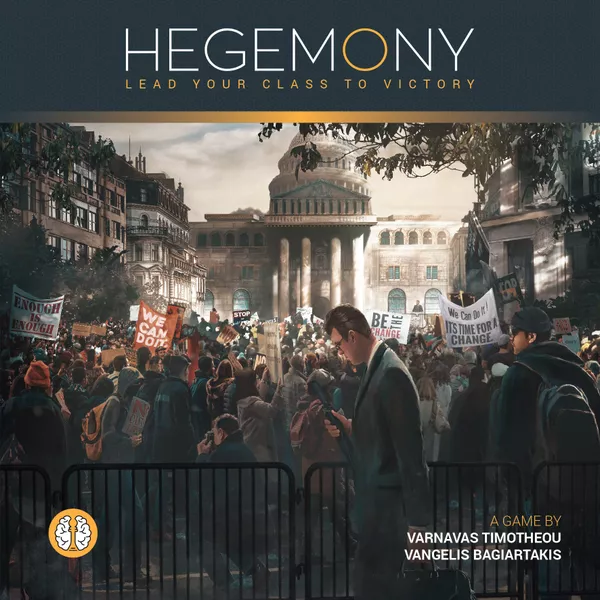Welcome to this week’s review! This week I’m taking a look back at one of my heaviest and most thematic games. So without further ado, let’s jump into it.
Hegemony: Lead Your Class to Victory
- Designers: Vangelis Bagiartakis, Varnavas Timotheou
- Publisher: Hegemonic Project Games
- Complexity: Heavy
- Time: 90-180 Minutes
- Players: 2-4
- Main Mechanisms: Hand Management
Hegemony is an asymmetric politico-economic game where each player plays as a different socio-economic group: Working Class, Middle Class, Capitalist Class, and the State. The game takes place over five rounds, and each class has different goals and ways of scoring points. For example, the Working Class aims to increase their prosperity by spending goods, while the Capitalist Class focuses on making a lot of money from producing and selling goods.
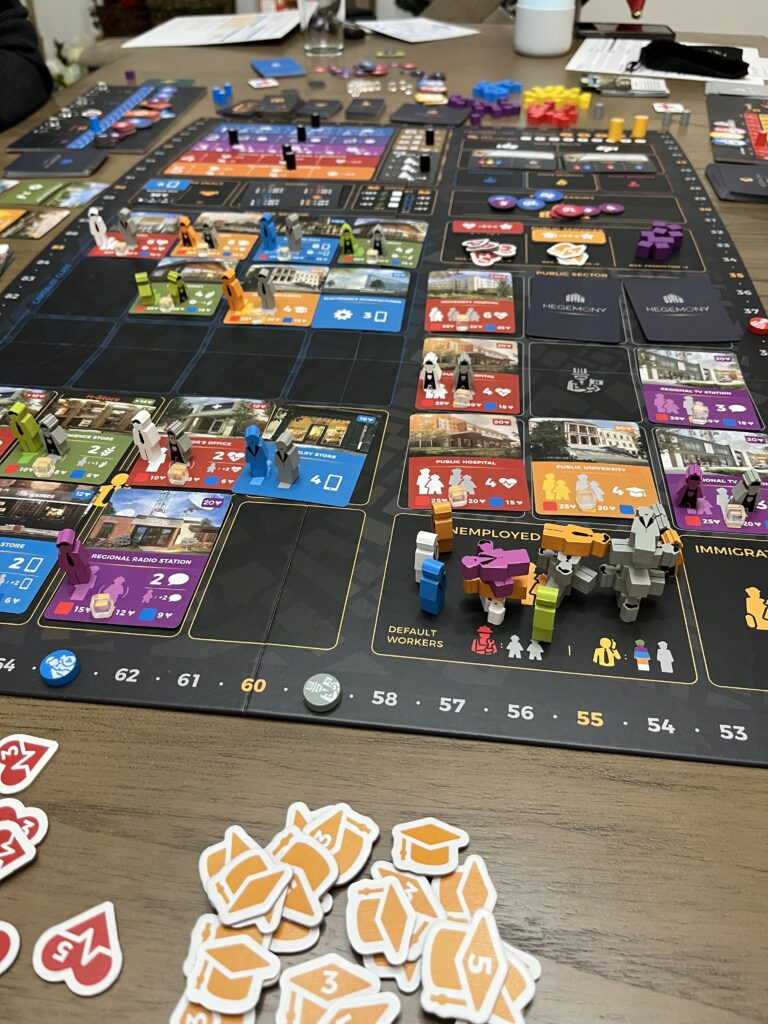
It’s unusual to see a heavy euro game with a political-economic theme, which makes the game that more impressive considering how well the mechanisms are intertwined with real-world academic principles. The Capitalist Class needs workers to work in their companies, so they employ Working and Middle Class workers; however, the Capitalists also have to pay their workers’ wages, which can be adjusted throughout the game; if wages are too low or too high, one of the Classes can call a vote to change the labor laws, which sets the minimum wage. This level of detail in the game’s design makes this not only a highly enjoyable simulation, but is also a great educational resource to learn more about the highly complex, real-life political and economic systems. I can understand that playing a heavy political-economic simulation might not be everyone’s cup of tea, but it’s astonishing how well Hegemony is able to build an enjoyable experience while throwing in an educational angle without feeling too dull or overwhelming.
If you’re looking for a game with plenty of player interaction, then I’m happy to report that Hegemony has it in spades. I already mentioned how players interact through companies and wages, but almost every action you take in this game impacts the other players at the table. One of the major ways this plays out is through seven policies, such as the size of the Public Sector, Labor Market, taxes, and government benefits. Each of the three classes has preferences on the level of each policy; however, changing policies usually requires classes to work together to vote on a certain outcome. For example, the Working and Capitalist Classes might work together to push for lower taxes, in exchange for the Capitalists supporting the Working Class to expand the Public Sector. There’s a lot of room for negotiation which makes each game feel unique, and as a player, allowing the flexibility to adjust your strategy based on what other players are doing.
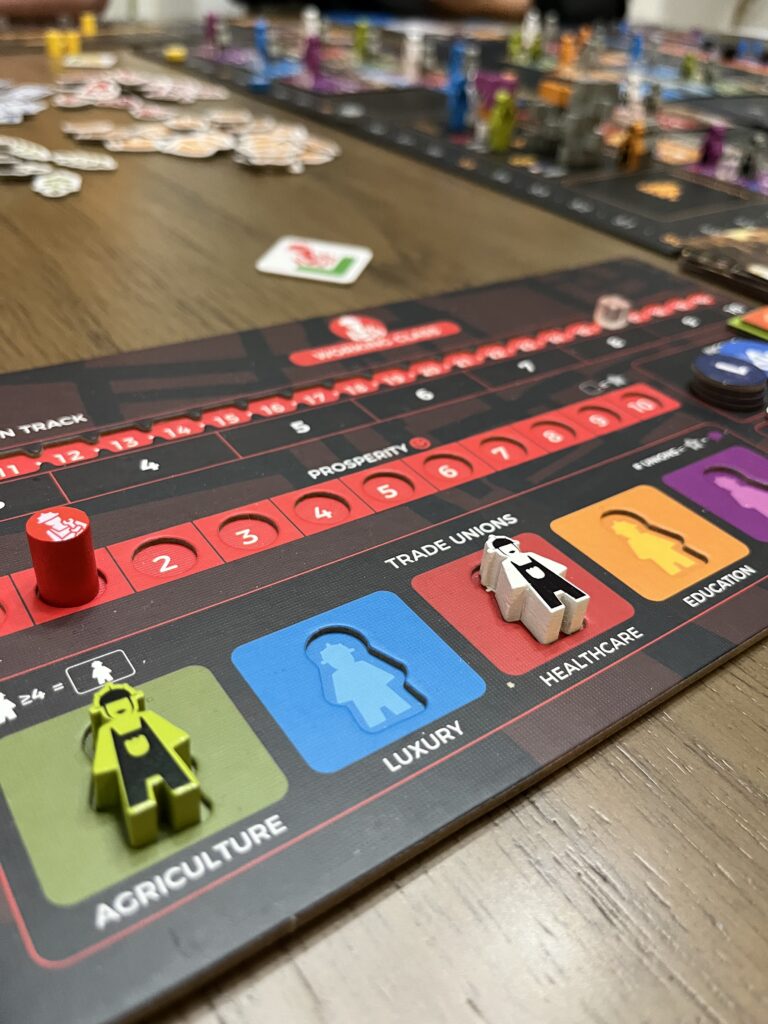
In addition, each of the four asymmetric classes holds their own. I’ve played as all four classes, and the next time I play Hegemony, I’d be happy to play any of them again. I’d say the Middle Class might be the most challenging to comprehend initially since they are a mix of Working and Capitalist Classes, but all feel equally fun and viable.
Another highlight in the design is that for all of the underlying interconnected systems, the core gameplay loop is fairly straightforward. Each round is broken up into different phases, but the majority of a round takes place in the Action Phase where players will take turns playing a card from their hand. At the beginning of each round, players will draw up to seven cards from their unique classes’ deck, and over the course of that round, players will play five of them. When playing a card, the player can either play the action on the card or they can choose to discard the card and perform a Basic Action from their class’ specific actions. In addition, the cards are usually some variation of the Basic Actions. Overall, I really enjoy the tactical nature of deciding what cards to play and having the ability to always perform a Basic Action keeps the game from feeling too restrictive or luck dependent on cards.
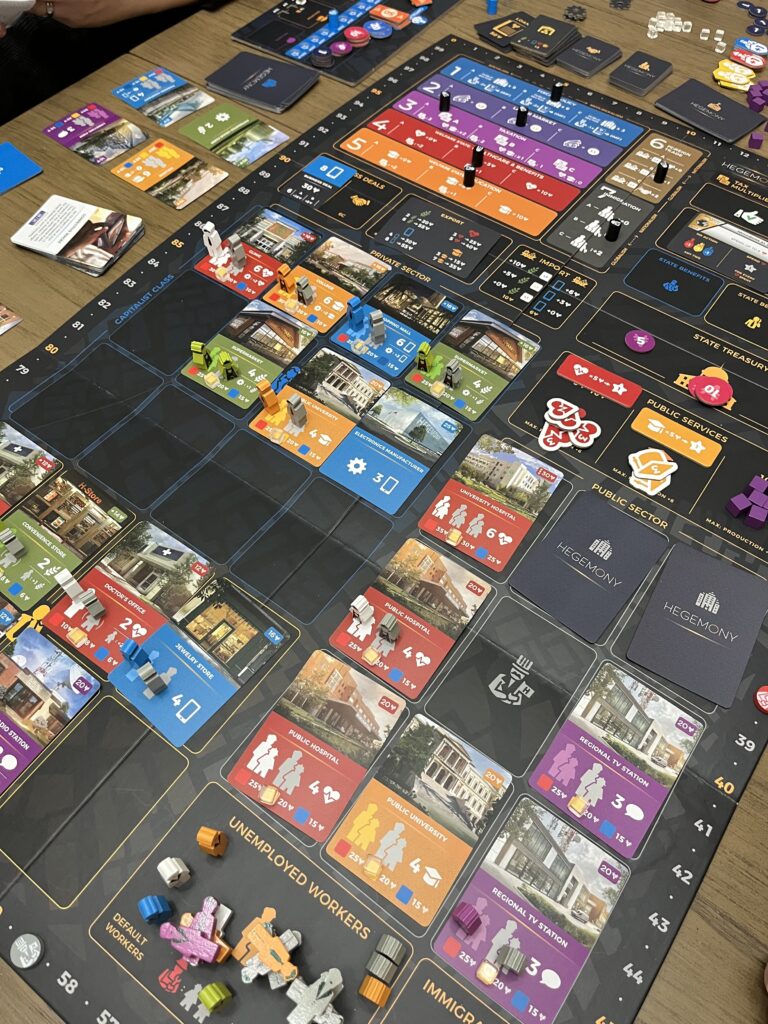
It’s worth noting that while the theming makes the game feel more approachable, Hegemony is still a very heavy game with a lot of rules. The setup and teach are also quite long since you have to teach each of the classes’ unique set of actions. Some of this is mitigated by the excellent reference cards (both large and small versions) for each Class, and some of the Basic Actions are shared across classes, which makes the game a bit easier to teach to new players. From my experience, games of Hegemony have easily lasted over three hours, and when playing with new players, I would plan for at least four hours.
Finally, while the game does allow for two or three players, Hegemony is at its best when played with the full four players. Personally, I probably wouldn’t choose to play the game with less than four players because you lose a lot of core interaction that I mentioned earlier.
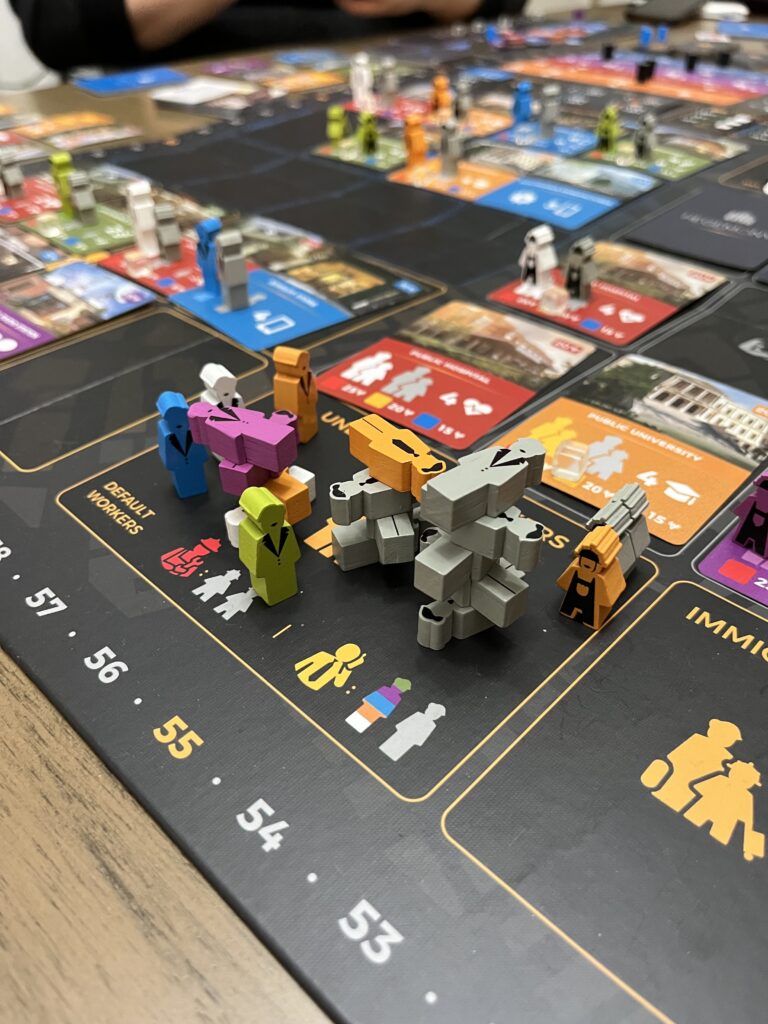
All this to say, since Hegemony is quite long and is best enjoyed with four players, it doesn’t make it to the table as often as I would like. I will say though, whenever I do get the chance to jump into the game, it’s one of the best experiences I’ll have in board gaming. The strong politico-economic theme might surprise some, but it also makes it a game that I would recommend almost any board gamer to give a chance at least once. There’s no other game in my collection that is able to integrate such a complex theme with its gameplay with such care and success, and that is why Hegemony is among my favorite games of all time.
With that, I’ll wrap up this week’s review! If you’ve played Hegemony, I’d love to hear your thoughts on the game, and what are your favorite heavy games with unique themes? I’d love to hear your thoughts on any of the games I’ve mentioned or future content suggestions in the comments below. Happy gaming!
If you liked this post and want to be notified when new content is released, then follow me on Instagram @themeepledigest.
